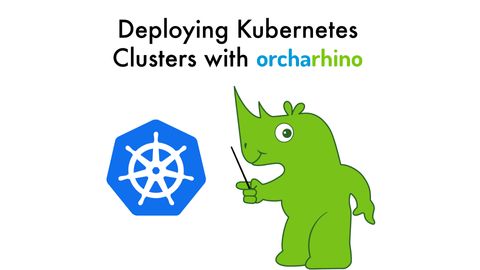Tag Archive for: Ansible

Ansible automation with AWX: an overview and how to get started
Ansible is powerful – but with AWX, automation becomes truly clear and manageable. The open-source platform offers a modern web interface, job scheduling, role-based access control, and much more. Discover how AWX simplifies the first steps and integrates seamlessly into modern IT strategies.

antsibull-changelog: Overview
Discover how antsibull-changelog simplifies release management for Ansible Collections – with automatic changelog generation and seamless CI/CD integration.

Event-Driven Ansible
Event-Driven Ansible is here and it opens a whole new world of possibilites for working with Ansible. This article gives an introduction to it and shows a minimal example.

Automating Kafka with Ansible
In all areas of life, there are a lot of issues we are not aware of. To measure these problems, we use the so-called fulfillment rate. For example: with a fulfillment rate of 90%, a heart beat would stop every 85 seconds, and an average A4 page of text would contain 30 typos. A fulfillment rate of 99.9% (which seems a lot) still means 22,000 wrong bank bookings per hour, and a total of 32,000 missed heart beats per year. The answer is automation and standardization! These approaches help solve problems we are often not aware of.

Configuration Management across Different Networks with AWX
At the Chemnitz Linux Days 2023, Ottavia Balducci, IT Consultant at ATIX, presented the advantages of AWX. AWX is a tool that can be used to configure hosts with Ansible. It is therefore particularly popular with larger organizations. AWX is open source, fully customisable, has a web UI, REST API, RBAC, CI/CD ... There are many reasons for working with AWX.

Configuring Hosts using Ansible
You can use Ansible to configure managed hosts within orcharhino. For our up-to-date documentation, see Configuring Hosts using Ansible.
Ansible is an automation engine and configuration management tool. It works without client and daemon and solely relies on Python and SSH. Ansible consists of a control node, for example a notebook, a workstation, or a server and managed nodes, that is the hosts in its inventory. You can use Ansible to configure hosts similar to Puppet and Salt.

AWX and GitLab Webhooks
Tools like AWX and Ansible Automation Platform have become essential in large organizations to manage a large amount of Ansible projects. They provide the ability to pull Ansible code from multiple sources, schedule jobs, distribute credentials and permissions for different users in the organization, and a lot more. We recommend managing Ansible code in a version control system, specifically Git. There are several platforms for functions beyond mere version control. In this article, GitLab plays a central role.

Ansible Best Practices
Ansible is a tool that automates configuration management through code written in YAML. It is extremely popular, partly thanks to the fact that it works without clients and daemons: all it needs is Python and an SSH connection!

Deploying a Kubernetes Cluster with orcharhino
This blog post is about an orcharhino feature called application-centric deployment (ACD), and describes the process of deploying a Kubernetes cluster with orcharhino. It allows administrators to create hosts based on application templates, and makes it easier to run multiple instances/versions of a complex application.

Ansible Automation Platform
Ansible is known to be one of the most widely used automation tools. This is certainly also due to the relatively simple setup and use. Especially in very large environments, i.e. with a large number of users, a pure CLI setup quickly reaches its limits: Multi-tenancy, credential management, scheduling are just some of the points that require a very close look.


